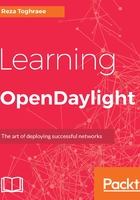
Introduction to SDN - Transformation from Legacy to SDN
You might have heard about Software-Defined Networking (SDN). If you are in the networking industry this is a topic that you probably have studied initially when you heard about the SDN for the first time.
To understand the importance of the SDN and SDN controller, let's look at Google. Google silently built its own networking switches and controller called Jupiter, a home grown project that is mostly software driven and supports such massive scale of Google.
Similar to all other technologies, we were in a hype for SDN for the last three years, everyone was talking about it, while it was still un-matured enough. The technology hype is a cycle for each and every new technology being introduced to the world. You can recall other hypes such as SD-WAN and IOT, where marketing and people start talking about them and industry leaders start giving ideas, publishing papers, and developing the idea while still there is not enough maturity in technology to become as a product.
The IT and computing industry is all about change. It changes its models, forms, or services from time to time. Even it goes back to a previous model where it was deprecated and ceased by a technology successor. For example, computers back in the 1970s, were all a central computing system in the form of a main frame, with multiple terminals. People were using a central system for executing their day to day computing requirements. This model slowly evolved by introducing micro and personal computers in the late 1980s and started to become a distributed computing. Mainframes started ceasing off, and were deprecated and replaced by standalone servers.
In the last five years, by explosion of the cloud, again we are going back to a central model, a model where a central cloud will perform all the computing, storage, networking, and security, without the need of any on-premises infrastructure.
Similarly, in the networking world, we are evolving to a central brain model. In the networking industry, we had standard protocols for more than 20 years. BGP, OSPF, ISIS, spanning tree, and so on are protocols and concepts that you deal with on a daily basis. These protocols were built on a very important basis, no one has a full picture of a network. However, in SDN, we are changing the basis. The SDN base is There is a controller who knows the whole network.
OpenDaylight (ODL) is an SDN controller. In other words, it's the central brain of the network.
Going back to SDN and this book, we will go for a practical experience with SDN and we will learn:
- What is and what is not SDN
- Difference between SDN and overlay
- The SDN controllers
- BUM (broadcast, unknown, and multicast)
- OpenDaylight as an SDN controller
- Understanding the flows, tables, and flow mappings
Traditional networking terms and features in the SDN world.